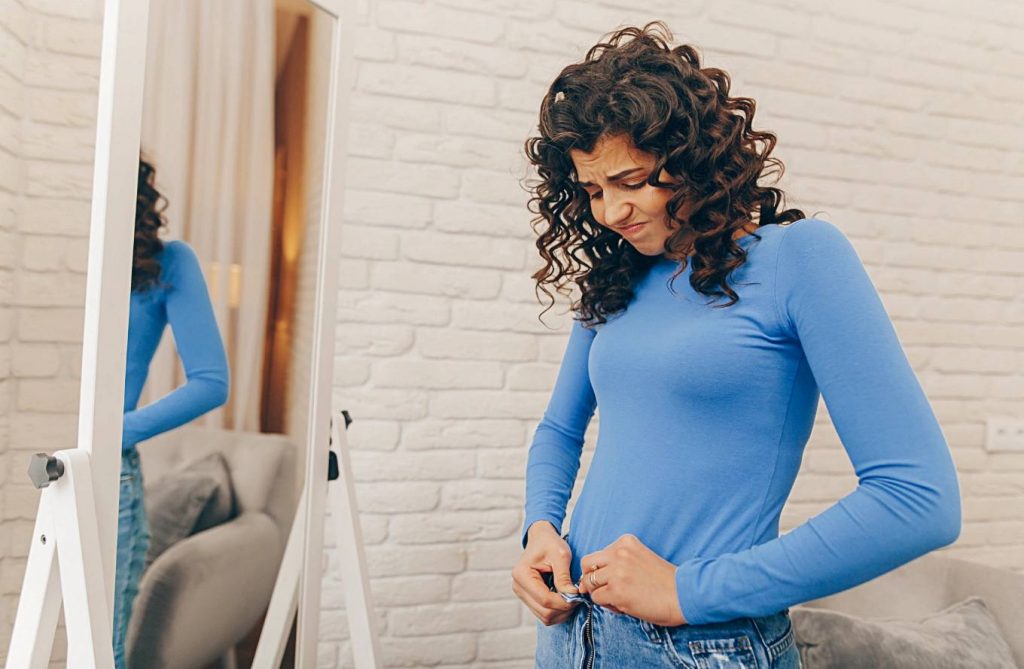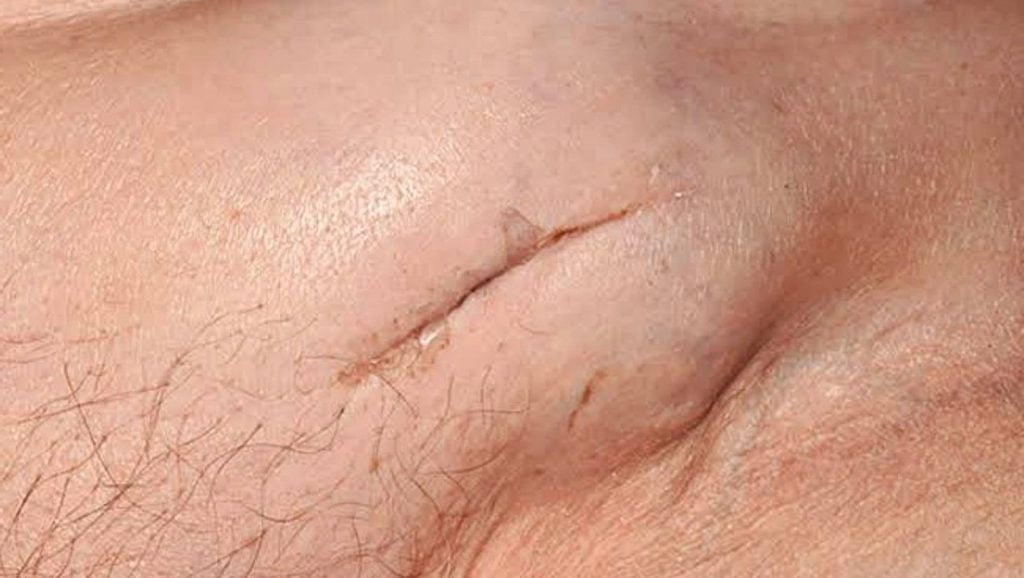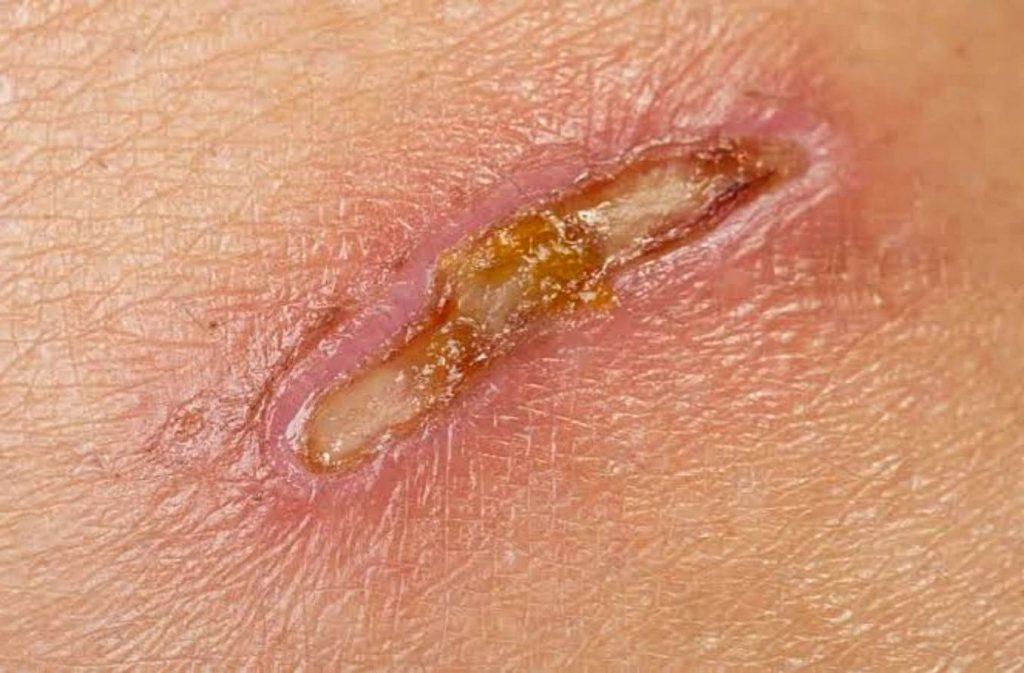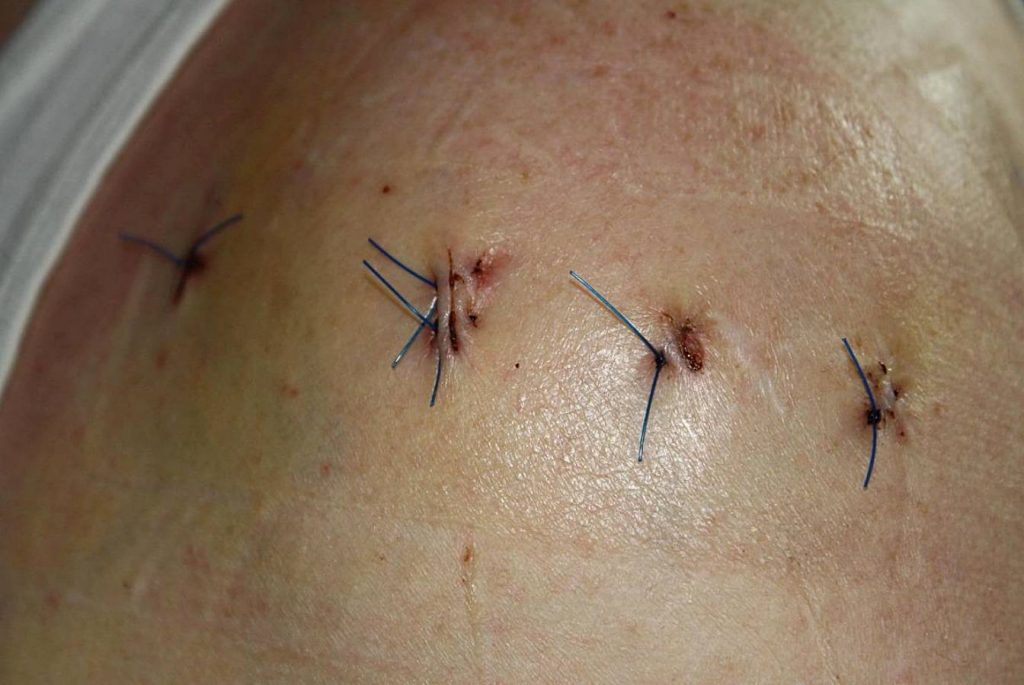Introduction:

All vital information concerning the symptoms of torn internal stitches after tummy tuck, are covered in this article. Please read to the end to learn more.
After tummy tuck, It might take up to a year for your body to fully recover following surgery, especially if you have internal muscle repair.
During this period, strenuous activities should be avoided for 6-8 weeks after surgery. Your surgeon will provide you with the optimal recommendations regarding your personal recovery time.
The time it takes to rehabilitate from a tummy tuck depends on a number of factors, including your age, weight, and overall health. If tummy tuck failed, during the recovery period, please it’s highly recommended to see your healthcare provider.
Below are the symptoms of torn internal stitches after tummy tuck. And if you have any questions, please ask us in the comment section below.
What Is Tummy Tuck Surgery?
Abdominoplasty, sometimes known as a “tummy tuck,” is a cosmetic surgical technique that is performed to make the abdomen slimmer and firmer.
The procedure involves the excision of extra skin and fat from the middle and lower abdomen in order to tighten the abdominal wall’s muscle and fascia.
This procedure is completely worthwhile. Most patients see remarkable benefits within three months, and by six months, they are surprised by how different their bodies appear. Sometimes the tummy continues to flatten and improve for up to a year.
Symptoms Of Torn Internal Stitches After Tummy Tuck:
1. Severe Swelling

The increase of organs, skin, or other bodily components is known as swelling. An accumulation of fluid in the tissues causes it.
The excess fluid might cause a fast weight gain in a short amount of time (days to weeks). Swelling can affect the entire body (generalized) or only one portion of the body (localized).
Severe swelling is one of the symptoms of torn internal stitches after tummy tuck. It is necessary to notify your surgeon if you begin to experience this.
Swelling can be caused by a variety of factors other than an underlying illness. Muscle damage, excessive standing, and consuming excessive quantities of salt are just a few examples.
Quick Note:
Swelling is a common adverse effect after a stomach tuck, regardless of the incision style. Swelling, like many other side effects, can vary depending on your immune system and healing process. It’s a temporary condition that will subside with time.
Don’t be frightened; this is a fully normal and expected component of stomach tuck recovery, as it is with virtually every surgical treatment.
Swelling after a belly tuck might linger for weeks, but there are several things you can do to keep it at bay.
However, if the swelling is considerable and has remained for an extended period of time, it might be one of the symptoms of torn internal stitches after tummy tuck. At this point, it is advisable to contact your doctor.
2. Fever

When the body temperature increases over the typical range of 98–100°F (36–37°C), it is called a fever. It’s a frequent infection symptom.
When an infection arises, the immune system goes on the attack to try to eliminate the source of the sickness. This response is accompanied by a rise in body temperature.
If the procedure goes wrong, a fever may develop. And fever can be one of the symptoms of torn internal stitches after tummy tuck. Please keep in mind that any procedure might result in injury and discomfort. Fever may be part of your body’s response to the injury and inflammation.
Quick Note:
While a fever is sometimes your body’s natural reaction after surgery, it can also be an indication of something more serious.
If you’ve just undergone surgery and have a temperature above 101°F, call your doctor straight away. You should also contact your doctor if you develop a fever several days following your treatment.
Some of the early postoperative fever is caused by an inflammatory response to tissue injury and foreign material exposure that happens after surgery and fades on its own after a few days. This is also referred to as “physiologic” fever by some individuals.
It’s common to experience itching at the incision site, since this signifies that your body is recovering. You may have acquired a serious bacterial or fungal infection if you are having persistent discomfort or other symptoms such as abnormal swelling, redness, fever, or chills.
3. Significant Redness Around The Area

Burns, allergic reactions, infections, and certain health disorders can all create redness on the skin. Some reasons are more serious than others and may necessitate medical attention.
After a belly tuck, you may see redness or red streaks around the region, which can be one of the effects of torn internal stitches after tummy tuck. Skin redness, on the other hand, might have reasons other than an underlying illness.
It’s possible that your incision is infected if it’s red. Some redness is to be expected.
However, if the redness persists or extends beyond half an inch from the cut, contact your doctor. If you notice pus in the incision or if it is more than slightly uncomfortable or painful, call your doctor.
Quick Note:
You may notice the following symptoms if your sutures have become infected: Swelling or redness around the sutures. fever. a worsening of the wound’s pain or sensitivity.
Granulation tissue that is in good health is pink in color and indicates that it is recovering.
Unhealthy granulation is dark red in color, bleeds easily on touch, and may suggest a wound infection. These wounds should be cultured and treated based on the microbiological findings.
NOTICE: Your wound should be clear after the initial release of pus and blood. If the discharge continues to smell awful or becomes discolored while the incision heals, it’s most likely an indication of infection.
4. Tender And Swollen Lymph Nodes

The most frequent cause of enlarged lymph nodes is infection with bacteria or viruses. Cancer causes swollen lymph nodes in just a small percentage of patients.
Lymph nodes, which are also known as lymph glands, play a crucial role in your body’s ability to fight illness.
In most cases, painful lymph nodes indicate that your body is fighting an infection. Without therapy, the discomfort normally goes away in a few days. For several weeks, the lymph node may not return to its original size.
This might also be a symptom of torn internal stitches after tummy tuck. Swollen lymph nodes are sometimes merely a sign that your body is doing what it’s intended to. Get it checked out if a swollen lymph node keeps growing bigger or doesn’t go away on its own after two weeks.
Quick Note:
After a Tummy Tuck, all patients have some edema above their incision line. This is caused by the division of the lymphatic veins that drain the natural fluid that seeps out of our working muscles via the abdominal skin and fat.
It’s usual to get lymphedema following a stomach tuck procedure. The cannula used to suck out the fat causes inflammation and damage, resulting in post-surgical lymphedema. The fluid fills the channels produced by the cannula, causing swelling in the surrounding tissue.
If you’re worried about your enlarged lymph nodes, see your doctor. Have emerged suddenly out of nowhere. Continue to grow in size or have been present for at least two weeks. When you push on them, they feel firm or rubbery, or they don’t move. Please, it is highly recommended to see a doctor.
Another Reading Suggestion
5. Pain When You Touch The Stitches

A person with infected sutures may experience redness or red streaks around the affected region. lymph nodes that are closest to the sutures are sensitive and swollen. When they move the wounded region or touch the stitches, they experience discomfort.
You may notice the following symptoms if your sutures have become infected: Swelling or redness around the sutures. a worsening of the wound’s pain or sensitivity.
When you touch the sutures or move the wounded region, you may experience discomfort. These are also one of the symptoms of torn internal stitches after tummy tuck.
It’s usual to experience some redness and swelling during this period, which can last up to 6 days following your operation.
Your doctor will be able to tell you how much is safe. Your wound may also feel heated and ache around the edges. Please visit your surgeon if the problem grows more serious.
Quick Note:
It’s crucial not to scratch your sutures; even if they’re strong, scratching them might cause them to break down. To give your wound the best chance of healing, you should avoid contact sports like football or hockey.
Following an injury, pain is unavoidable. The agony will almost probably be more intense if you have a deep cut. However, if you have persistent pain, it might be an indication of infection, especially if it is not proportional to the size of the damage you’ve experienced.
At this point, it is essential for you to get medical attention at the first symptom of the infection.
6. Yellow Drainage Coming From The Wound

Infection is an indication of purulent discharge. The fluid is white, yellow, or brown in color and might be slightly thick in texture. It’s made up of white blood cells attempting to combat the infection, as well as any germs that have been driven out of the wound. The fluid may also have an unpleasant odor.
Pain should usually lessen when a wound heals, therefore persistent or growing pain is a symptom of infection. Pain should reduce rather than worsen as a result of medication. Another sign is an aching body.
We consider yellow or green drainage from the injury to be one of the symptoms of torn internal stitches after tummy tuck, when it grows more serious.
For the first two or three days, serous and serosanguinous discharge is usual. However, keep an eye out for signals that the amount of blood in the serum is growing. Consult your doctor if this occurs. It’s essential to keep an eye on a wound while it heals.
Quick Note:
The fluid will be bloody when you initially receive the drain. As the wound heals and the fluid drains, the color will shift from red to pink to pale yellow or clear. Your doctor may tell you when the drain is no longer needed and when it will be removed.
After surgery, you may be discharged for a few weeks. A tiny amount of blood staining is to be expected. If the discharge is thick, yellow or green, or has a foul odor, it might be an indication of infection, and you should contact your doctor.
7. A Bad Smell Coming From The Stitches

The stench of a wound, also known as malodor, is caused by necrotic tissue or bacterial colonization in the wound area.
Certain dressings, such as hydrocolloids, have a distinct odor as a result of the chemical interaction that occurs between the dressing and wound exudate, resulting in odor.
There may be cause for worry if a wound continues to release an unpleasant odor after thorough cleansing and treatment.
While any wound can have a smell, most people can detect one that is extremely intense or just doesn’t smell right, which might be a symptom of infection.
A strong odor originating from the healed region might also be a symptom of torn internal stitches after tummy tuck. We also recommend you to inform your doctor.
Quick Note:
While a healing wound may have an odor under normal circumstances, a clearly foul-smelling wound should alert any wound care specialist. In most cases, offensive smells from a wound site indicate bacterial colonization and infection.
Infected wounds, on the other hand, frequently have a distinct odor in addition to other symptoms.
Some bacteria have a sickly sweet odor, while others have a pungent, rotten, or ammonia-like odor. If you notice a strong or foul odor, particularly if there is pus, drainage, or warmth present, contact your doctor immediately.
Another Reading Suggestion
Frequently Asked Questions And Answers
How Long Would It Take For A Tummy Tuck To Recover Internally?
A tummy tuck takes roughly 6-8 weeks to recover from.
For around six weeks, an abdominal binder will be worn. This helps to avoid fluid collection and supports your abdomen. While the recovery period for a mini-tummy tuck is often shorter, you must avoid strenuous exercise for at least six weeks.
Antibiotics and potentially anticoagulants will be prescribed. When bathing for an extended period of time, you may be advised to sit in a chair.
If you’re on pain medication, you should also avoid alcohol and any type of nicotine for at least six weeks. Smoking might slow down the healing process and increase the risk of complications.
How Long Does It Take For Muscle Healing After A Tummy Tuck?
This is a dramatic shift in the abdominal area’s muscular structure. It takes the body six to eight weeks to adjust, recover, and establish the alterations in place as a permanent, stable fixture.
A muscle-repair stomach tuck entails the surgeon suturing the rectus muscles’ fascia, or connective tissue, together and bringing them in close together.
The cost and recuperation time are the key differences between muscle-repair and non-muscle-repair tucks. Patients who did not get muscle restoration can usually resume their normal activities in two weeks.
After A Tummy Tuck, How Often Can I Massage My Stomach?
Scar massage should be done several times throughout the day for 5-10 minutes each time. It’s essential to follow your postoperative stomach tuck instructions carefully. In the post-operative phase, we advise you to walk about as soon as possible.
Furthermore, individuals who have had procedures such as liposuction or stomach tucks should begin three to five massage sessions two weeks after the treatment. “The time is great since the bruises will have faded and it will not be unpleasant,” According to study.
Is A Bulge After A Tummy Tuck Considered Normal?
Swelling in the abdomen area after a tummy tuck is completely normal and anticipated.
This area of the body’s blood vessels and lymphatic vessels function as a fluid drainage system. During a stomach tuck, these veins are severed.
The first two months after a belly tuck are when swelling is at its worst. Swelling should continue to subside as the body repairs blood and lymphatic vessels.
Since the healing process might take up to a year or longer, mild swelling is typical throughout that period. Depending on the treatment plan you pick, and the degree of edema you experience may vary.
After A Tummy Tuck, Why Do I Sense Movement In My Lower Abdomen?
Due to the injured nerves in the region, many abdominoplasty patients have numbness in the lower abdomen area following the procedure. With time, when the nerves begin to reestablish their appropriate routes, the patient will begin to feel sensation again.
Although the sensation of tightness may be frightening, it is a normal aspect of the healing process. Patients can expect this to persist six to twelve weeks after their belly tuck treatment, but it might take up to a year to restore normal abdominal sensory function.
Final Thoughts
Tummy tucks are an excellent operation for patients who have lost a significant amount of weight due to pregnancy or bariatric surgery. With that in mind, it’s also essential to be aware of the potential adverse effects before proceeding with the surgery.
Major swelling usually goes away within a month, while moderate swelling might last for several months. Drainage tubes are commonly placed at incision sites to assist filter fluid from the body. If you start experiencing severe swelling after a tummy tuck procedure, please notify your doctor.
Take note of all effects given above this article, they are highly researched and reviewed by our medical team. And we hoped it was helpful to you? If YES, please leave a comment below. Thanks.


